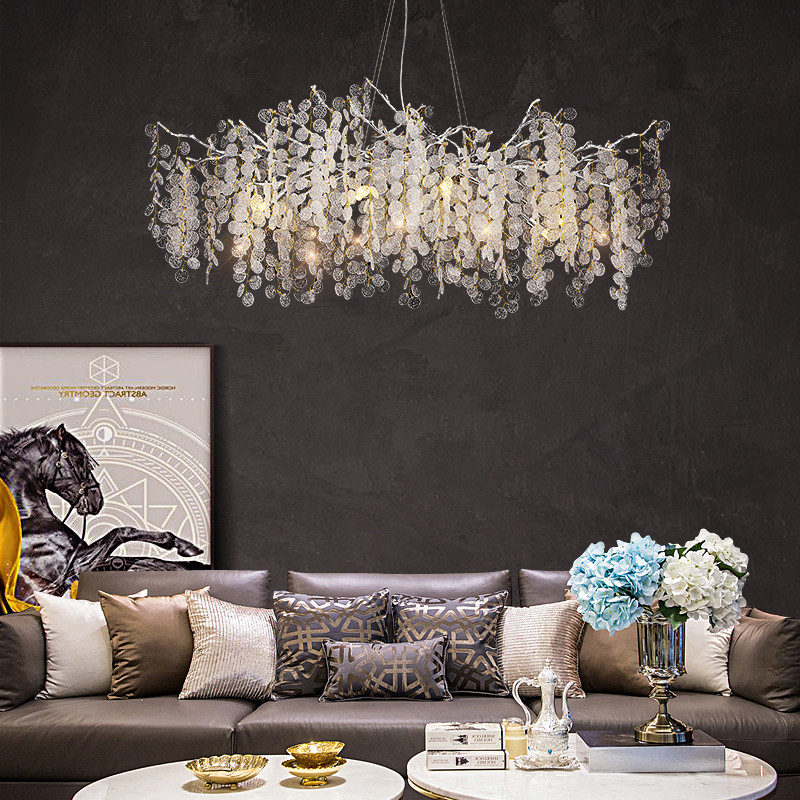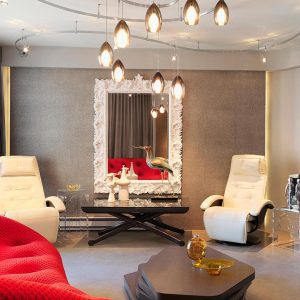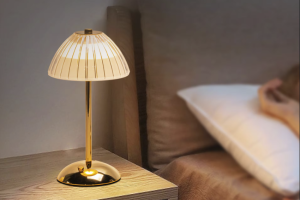
Shining Bright: Lighting Fashion Trends for 2025
In recent years, the concept of sustainability has permeated various sectors, and the lighting industry is no exception. The rise of sustainable lighting fashion reflects a growing awareness of environmental issues and a collective desire to reduce carbon footprints. Designers and manufacturers are increasingly prioritizing eco-friendly materials and energy-efficient technologies in their creations.
This shift is not merely a trend; it represents a fundamental change in how lighting is conceptualized, produced, and consumed. For instance, brands are now utilizing recycled materials, such as reclaimed wood and repurposed metals, to craft unique lighting fixtures that tell a story while minimizing waste. Moreover, the advent of LED technology has revolutionized the lighting landscape.
LEDs consume significantly less energy than traditional incandescent bulbs, leading to lower electricity bills and reduced greenhouse gas emissions. This technological advancement has allowed designers to experiment with innovative forms and styles without compromising on sustainability. The integration of smart lighting systems further enhances this trend, enabling users to control their energy consumption through apps and automated settings.
As a result, sustainable Masa Lighting fashion is not only about aesthetics but also about creating a harmonious relationship between design and environmental responsibility.
The Influence of Technology on Lighting Fashion
The influence of technology on lighting fashion cannot be overstated. With the rapid advancement of digital tools and smart technologies, designers are now equipped with unprecedented capabilities to create dynamic and interactive lighting solutions. For example, the use of 3D printing technology has enabled designers to produce intricate and customized lighting fixtures that were previously impossible to manufacture.
This innovation allows for greater creativity and personalization in lighting design, catering to individual tastes and preferences. Additionally, the integration of smart home technology has transformed how consumers interact with lighting. Smart bulbs can be controlled remotely via smartphones or voice-activated devices, allowing users to adjust brightness, color, and even set schedules for their lighting systems.
This level of control not only enhances convenience but also encourages users to experiment with different lighting atmospheres in their homes. The ability to synchronize lighting with music or visual displays has also opened new avenues for artistic expression, blurring the lines between technology and fashion in the realm of lighting design.
The Intersection of Fashion and Interior Design
The intersection of fashion and interior design is a fertile ground for innovation, particularly in the realm of lighting. Designers from both fields are increasingly collaborating to create cohesive environments that reflect contemporary aesthetics and lifestyles. Lighting is no longer viewed as a mere functional element; it has become an integral part of the overall design narrative.
For instance, fashion designers are now considering how their collections can be complemented by specific lighting schemes that enhance the mood and highlight key features of their designs. This synergy is evident in high-profile collaborations where fashion houses partner with lighting brands to create exclusive collections. These partnerships often result in limited-edition pieces that merge artistic vision with practical functionality.
A notable example is the collaboration between renowned fashion designer Tom Dixon and various interior design firms, where his sculptural lighting pieces have become iconic representations of modern design. Such collaborations not only elevate the status of lighting within the design hierarchy but also encourage consumers to view lighting as an essential component of their personal style.
The Role of Lighting in Enhancing Fashion Shows and Runways
Lighting plays a pivotal role in shaping the atmosphere of fashion shows and runways, serving as a powerful tool for storytelling and brand identity. The strategic use of light can dramatically alter perceptions of a collection, highlighting textures, colors, and silhouettes in ways that captivate audiences. Designers often work closely with lighting directors to create bespoke lighting designs that align with their creative vision.
For instance, during the Paris Fashion Week, many designers employ dynamic lighting techniques that change throughout the show, enhancing the emotional impact of each segment. Moreover, innovative lighting technologies such as projection mapping have begun to make waves in the fashion industry. This technique allows designers to project images or animations onto surfaces, transforming the runway into an immersive experience.
A prime example is the 2018 Balenciaga show, where projections were used to create an otherworldly environment that complemented the collection’s avant-garde aesthetic. Such advancements not only elevate the visual experience but also engage audiences on multiple sensory levels, making fashion shows more memorable and impactful.
The Evolution of Wearable Lighting Technology
Wearable lighting technology has emerged as a fascinating intersection of fashion and functionality, pushing the boundaries of traditional clothing design. This evolution has been driven by advancements in materials science and electronics, allowing designers to incorporate light into garments in innovative ways. From LED-embedded dresses to illuminated accessories, wearable lighting is redefining how we perceive fashion.
Designers like Anouk Wipprecht have pioneered this field by creating dresses that respond to environmental stimuli, such as changes in temperature or movement, thereby creating a dynamic interaction between the wearer and their surroundings. The potential applications for wearable lighting extend beyond aesthetics; they also encompass safety and functionality. For instance, cycling apparel with integrated LED lights enhances visibility for riders during nighttime commutes, merging practicality with style.
Similarly, fashion shows have begun to feature models wearing garments equipped with programmable lights that can change colors or patterns in real-time, creating a captivating visual spectacle on the runway. This fusion of technology and fashion not only showcases creativity but also addresses real-world needs through innovative design solutions.
The Impact of Cultural and Artistic Influences on Lighting Fashion
Cultural and artistic influences play a significant role in shaping lighting fashion trends across the globe. Designers often draw inspiration from various cultural motifs, historical references, and artistic movements to create unique lighting pieces that resonate with diverse audiences. For example, the minimalist aesthetic prevalent in Scandinavian design emphasizes simplicity and functionality, leading to the creation of sleek lighting fixtures that embody these principles.
In contrast, designers influenced by Baroque art may opt for opulent chandeliers adorned with crystals that reflect grandeur and extravagance. Artistic movements also leave an indelible mark on lighting design. The Art Deco movement of the 1920s and 1930s celebrated geometric shapes and bold colors, resulting in iconic lighting designs that continue to inspire contemporary creators.
Similarly, the rise of digital art has led to innovative approaches in lighting design, where artists use light as a medium for expression. Installations that incorporate light as a primary element challenge traditional notions of space and form, inviting viewers to engage with their surroundings in new ways. In conclusion, the interplay between cultural influences and artistic expression continues to drive innovation in lighting fashion.
As designers explore new materials and technologies while remaining attuned to cultural narratives, they create pieces that not only illuminate spaces but also evoke emotions and provoke thought. This ongoing dialogue between culture, art, and design ensures that lighting fashion remains a vibrant and evolving field that reflects the complexities of contemporary life.


